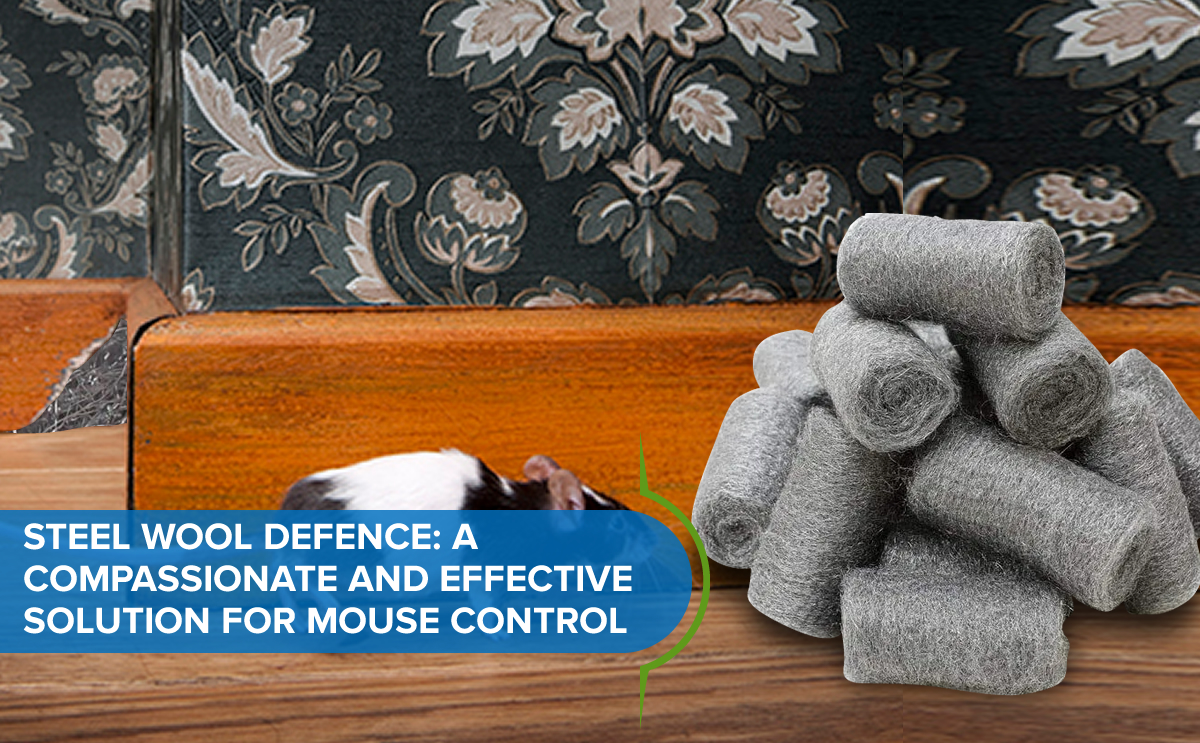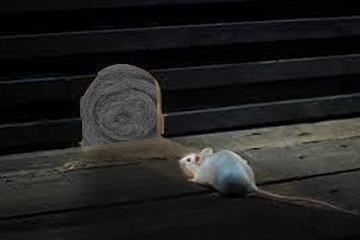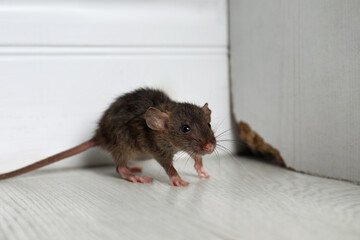- Pigeon Repellent Guide
- The Ultimate Guide to Bird Spikes
- The ultimate Guide on How to get rid of fruit flies
- Guide On How To Get Rid Of Flies Inside Your House
- How does steel wool for mice help safeguard your spaces?
- Everything you need to know about the mosquitoes | How to prevent them
- Which company is best for pest control ? How To Decide?
- What is rodent proofing and why do you need rodent proofing?
- Ultimate Guide to Get Rid Of Flying Insects UK
- Comprehensive Guide to Using Steel Wool for Mice Control
Steel Wool Defence: A Compassionate and Effective Solution for Mouse Control
On February 6, 2024
Comments Off on Steel Wool Defence: A Compassionate and Effective Solution for Mouse Control

Introduction:
Mice, those unwelcome intruders, can wreak havoc in our homes, posing threats to both our property and health. Amidst the myriad of methods to tackle these pesky rodents, there exists a simple yet powerful solution that often flies under the radar: steel wool. In this blog, we explore why steel wool emerges as a formidable deterrent for mice, presenting itself as a humane and eco-friendly alternative to conventional pest control measures.
As we navigate the challenges of rodent infestations, it’s worth exploring the efficacy of steel wool—a material with unique qualities that make it an effective barrier against mice. Let’s unravel the potential of this unassuming yet powerful tool in our quest for a mouse-free home.
The Problem with Mice:
The issue with mice extends beyond their tiny size, as these notorious intruders skillfully infiltrate homes in search of shelter, food, and warmth. Once within our living spaces, they become more than just a nuisance; they can wreak havoc by gnawing on furniture, walls, and even electrical wiring, causing structural damage that may lead to costly repairs.
Moreover, mice aren’t just silent destroyers—they bring with them the potential for health risks. Their presence can introduce diseases and allergens into our homes, putting occupants at risk. Traditional methods of mouse control often involve the use of traps or poisons, but these come with their own set of drawbacks. Not only can these methods be harmful to the environment, but they also pose risks to non-target animals.
It becomes evident that an effective and holistic approach to mouse control is essential, one that not only addresses the immediate problem but also considers the broader implications. In this context, steel wool emerges as a promising solution, offering a humane and eco-friendly alternative to conventional pest control methods. By understanding the extent of the issues caused by mice, we can better appreciate the value of employing steel wool as a strategic defence against these persistent invaders.

The Steel Wool Solution:
While steel wool might not be the go-to solution for many when contemplating mouse control, its effectiveness and humane nature make it a viable option. This unassuming material serves as a versatile defence against mice for several reasons.
Firstly, steel wool acts as a robust physical barrier. Mice, known for their ability to squeeze through minuscule openings, find their paths obstructed when encountering steel wool. By strategically stuffing it into gaps, cracks, and holes around your home, you create a formidable deterrent that prevents mice from both entering and escaping.
Additionally, steel wool serves as a formidable chewing deterrent. Given mice’s incessantly growing teeth, gnawing is a natural behaviour to keep them in check. Steel wool, being a tough and resilient material, presents a significant challenge for mice, dissuading them from attempting to chew through it.

What sets steel wool apart is its non-toxic and eco-friendly nature. Unlike conventional mouse control methods involving traps or poisons, steel wool doesn’t rely on harmful chemicals. This makes it a safer option for both human occupants and pets. Furthermore, steel wool is environmentally friendly, as it can be recycled, leaving behind no lasting impact on the environment.
In embracing steel wool as a mouse control strategy, we not only create a formidable defence against these rodents but also contribute to a safer and more eco-conscious approach to pest management.
Buy Our Steel Wool Mice Control product here.
How to Use Steel Wool Effectively:
Effectively using steel wool as a mouse control method involves a strategic and thorough approach. Follow these steps to maximise the efficiency of steel wool in keeping mice at bay:
Identify Entry Points:
Begin by conducting a thorough inspection of your home to locate potential entry points for mice. Common areas include gaps around pipes, vents, utility lines, and any other openings in the exterior structure. Mice can exploit even the tiniest spaces, so be meticulous in your examination.
Secure Openings:
Once you’ve identified possible entry points, it’s time to fortify them with steel wool. Take care to select a high-grade steel wool, preferably one with a tight weave. Begin by stuffing the steel wool tightly into the openings, ensuring a snug fit. Pay special attention to gaps around plumbing pipes, as these are often favoured entry points. Mice are persistent and agile, so it’s crucial to pack the steel wool in such a way that they cannot easily pull it out or squeeze through.
Consider using gloves during this process to protect your hands from any sharp edges of the steel wool. Additionally, wearing safety glasses may be advisable to prevent any particles from getting into your eyes.
Monitor and Replace:
Regular monitoring is essential for maintaining the effectiveness of steel wool barriers. Periodically inspect the areas where steel wool has been applied and be on the lookout for any signs of wear, damage, or displacement. Mice are resourceful creatures, and they may attempt to chew or push through the steel wool over time. Replace any sections that show signs of compromise promptly.
A proactive approach is key to successful mouse control. Consider setting up a schedule for routine inspections, especially during seasons when mice are more likely to seek shelter, such as fall and winter.
Additional Tips:
– Seal interior gaps: While focusing on external entry points is crucial, also inspect and seal any gaps or cracks within your home. Steel wool can be an effective deterrent in attics, basements, and crawl spaces as well.
– Combine with other preventive measures: Enhance the effectiveness of steel wool by incorporating it into a comprehensive pest prevention plan. This may include maintaining cleanliness, proper food storage, and eliminating potential nesting sites.
Utilising steel wool effectively in mouse control requires a meticulous approach, from identifying entry points to regularly monitoring and maintaining the barriers. By integrating these steps into your pest management strategy, you can create a formidable defence against mice while opting for a humane and environmentally friendly solution.
Conclusion:
While contemplating mouse control, steel wool may not be the initial solution that springs to mind, but its remarkable effectiveness as a mouse deterrent positions it as a worthwhile option. For those inclined towards a humane and eco-friendly approach to pest control, steel wool emerges as a powerful ally.
By strategically employing steel wool to block potential entry points, you establish a formidable barrier that dissuades mice from infiltrating your living spaces. Unlike traditional methods involving harmful chemicals or traps, steel wool offers a safe and environmentally conscious alternative. Its physical presence acts as a deterrent, preventing mice from entering or escaping, making it an excellent choice for those looking to address the root of the problem without resorting to more aggressive measures.
Next time you find yourself grappling with a mouse problem, consider harnessing the power of steel wool in defending your home against these unwanted guests. This unassuming material proves that effective pest control can be achieved through thoughtful and sustainable means, promoting a harmonious coexistence with the environment while safeguarding your home from the potential hazards posed by mice.
